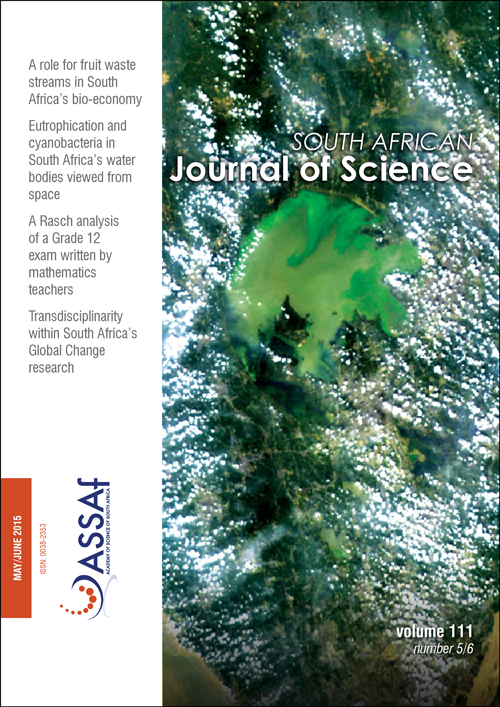Characteristics of potential gasifier fuels in selected regions of the Lake Victoria Basin
DOI:
https://doi.org/10.17159/sajs.2015/20140151Keywords:
gasification, biomass, renewable energy, East AfricaAbstract
All countries in the Lake Victoria Basin depend mostly on hydroelectric power for the provision of energy. Gasification technology has a high potential for reducing biomass energy consumption whilst increasing access to modern energy services. The key aspect for the failure of gasification operations in the Lake Victoria Basin is inadequate adaptation of gasification equipment to fuel characteristics, lack of fuel specification and inappropriate material choice. We therefore investigated the thermo-chemical characterisation of six biomass fuels, namely Pinus caribaea, Calitris robusta, Cupressus lusitanica, Eucalyptus grandis, Pinus patula and sugarcane bagasse from selected regions of the Lake Victoria Basin. Ultimate analysis was done using a Flash 2000 elemental analyser. Moisture content, ash content and volatile matter were determined in oven and muffle furnaces while heating values were determined using a Gallenkamp calorimeter. The mean percentage levels obtained indicate that all six biomass fuels had a mean range for nitrogen of 0.07±0.2–0.25±0.07%, for carbon of 40.45±0.61–48.88±0.29%, for hydrogen of 4.32±0.13–5.59±0.18% and for oxygen of 43.41±1.58–51.1±0.64%. Moisture content ranged between 25.74±1.54% and 56.69±0.52%, ash content between 0.38±0.02% and 2.94±0.14%, volatile matter between 74.68±0.49% and 82.71±0.19% and fixed carbon between 14.35±0.33% and 24.74±0.27%. Heating values ranged between 16.95±0.10 MJ/kg and 19.48±0.42 MJ/kg. The results suggest that all six biomass fuels are potential biomass gasification materials.
Published
Issue
Section
License

All articles are published under a Creative Commons Attribution 4.0 International Licence
Copyright is retained by the authors. Readers are welcome to reproduce, share and adapt the content without permission provided the source is attributed.
Disclaimer: The publisher and editors accept no responsibility for statements made by the authors
How to Cite
- Abstract 453
- PDF 419
- EPUB 216
- XML 269













.png)